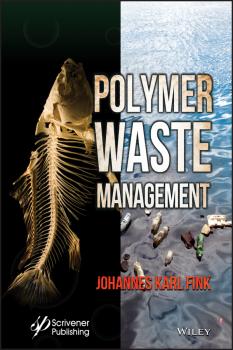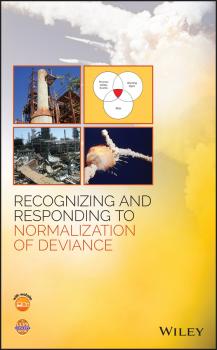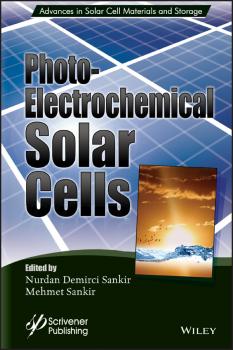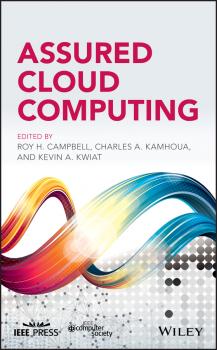Техническая литература
Различные книги в жанре Техническая литератураNoise and Vibration Control in Automotive Bodies
A comprehensive and versatile treatment of an important and complex topic in vehicle design Written by an expert in the field with over 30 years of NVH experience, Noise and Vibration Control of Automotive Body offers nine informative chapters on all of the core knowledge required for noise, vibration, and harshness engineers to do their job properly. It starts with an introduction to noise and vibration problems; transfer of structural-borne noise and airborne noise to interior body; key techniques for body noise and vibration control; and noise and vibration control during vehicle development. The book then goes on to cover all the noise and vibration issues relating to the automotive body, including: overall body structure; local body structure; sound package; excitations exerted on the body and transfer functions; wind noise; body sound quality; body squeak and rattle; and the vehicle development process for an automotive body. Vehicle noise and vibration is one of the most important attributes for modern vehicles, and it is extremely important to understand and solve NVH problems. Noise and Vibration Control of Automotive Body offers comprehensive coverage of automotive body noise and vibration analysis and control, making it an excellent guide for body design engineers and testing engineers. Covers all the noise and vibration issues relating to the automotive body Features a thorough set of tables, illustrations, photographs, and examples Introduces automotive body structure and noise and vibration problems Pulls together the diverse topics of body structure, sound package, sound quality, squeak and rattle, and target setting Noise and Vibration Control of Automotive Body is a valuable reference for engineers, designers, researchers, and graduate students in the fields of automotive body design and NVH.
Recognizing and Responding to Normalization of Deviance
CCPS (Center for Chemical Process Safety)
An essential guide for recognizing and responding to normalization of deviance to help organizations improve their process safety performance This book provides an introduction and offers approaches for finding and addressing normalization of deviation both in operational and organizational activities. It addresses the initial and long-term effects of normalization of deviations as seen in reduced efficiencies, reduced product quality, extended batch run time, and near miss process safety incidents which can lead to loss of containment of hazardous materials and energies. Recognizing and Responding to Normalization of Deviance addresses how to recognize and respond to the normalization of deviation that can, and almost certainly will, occur in any ongoing operations that involves humans. The book’s primary focus is on reducing the incidence of normalization of deviation and the associated increased risk exposure due to its effects when operating chemical or petrochemical manufacturing facilities. It contains an introduction to the concept and offers approaches for finding and addressing normalization of deviation when it presents itself in both operational and organizational activities. Contains guidance to assist facilities in recognizing and addressing the phenomenon of normalization of deviation Provides techniques for addressing normalized deviations and techniques to eliminate waste in all manufacturing processes Describes methods for identifying normalized deviation as well as where to find deviations Includes techniques to reduce operational normalization of deviance and to reduce organizational normalization of deviance Aimed at process safety professionals and consultants applying process safety risk reduction efforts in manufacturing areas, Recognizing and Responding to Normalization of Deviance is an important book for any organization that has seen its process safety performance deteriorate over time.
Microwave Polarizers, Power Dividers, Phase Shifters, Circulators, and Switches
Discusses the fundamental principles of the design and development of microwave satellite switches utilized in military, commercial, space, and terrestrial communication This book deals with important RF/microwave components such as switches and phase shifters, which are relevant to many RF/microwave applications. It provides the reader with fundamental principles of the operation of some basic ferrite control devices and explains their system uses. This in-depth exploration begins by reviewing traditional nonreciprocal components, such as circulators, and then proceeds to discuss the most recent advances. This sequential approach connects theoretical and scientific characteristics of the devices listed in the title with practical understanding and implementation in the real world. Microwave Polarizers, Power Dividers, Phase Shifters, Circulators and Switches covers the full scope of the subject matter and serves as both an educational text and resource for practitioners. Among the many topics discussed are microwave switching, circular polarization, planar wye and equilateral triangle resonators, and many others. Translates concepts and ideas fundamental to scientific knowledge into a more visual description Describes a wide array of devices including waveguides, shifters, and circulators Covers the use of finite element algorithms in design Microwave Polarizers, Power Dividers, Phase Shifters, Circulators and Switches is an ideal reference for all practitioners and graduate students involved in this niche field.
Advanced Textile Engineering Materials
Advanced Textile Engineering Materials is written to educate readers about the use of advanced materials in various textile applications. In the first part, the book addresses recent advances in chemical finishing, and also highlights environmental issues in textile sectors. In the second part, the book provides a compilation of innovative fabrication strategies frequently adopted for the mechanical finishing of textiles. The key topics are • Smart textiles • Functional modifications • Protective textiles • Conductive textiles • Coated/laminated textiles • Antimicrobial textiles • Environmental aspects in textiles • Textile materials in composites • 3-D woven preforms for composite reinforcement • Evolution of soft body armor
Electrical Systems for Nuclear Power Plants
Covers all aspects of electrical systems for nuclear power plants written by an authority in the field Based on author Omar Mazzoni’s notes for a graduate level course he taught in Electrical Engineering, this book discusses all aspects of electrical systems for nuclear power plants, making reference to IEEE nuclear standards and regulatory documents. It covers such important topics as the requirements for equipment qualification, acceptance testing, periodic surveillance, and operational issues. It also provides excellent guidance for students in understanding the basis of nuclear plant electrical systems, the industry standards that are applicable, and the Nuclear Regulatory Commission’ rules for designing and operating nuclear plants. Electrical Systems for Nuclear Power Plants offers in-depth chapters covering: elements of a power system; special regulations and requirements; unique requirements of a Class 1E power system; nuclear plants containment electrical penetration assemblies; on-site emergency AC sources; on-site emergency DC sources; protective relaying; interface of the nuclear plant with the grid; station blackout (SBO) issues and regulations; review of electric power calculations; equipment aging and decommissioning; and electrical and control systems inspections. This valuable resource: Evaluates industry standards and their relationship to federal regulations Discusses Class 1E equipment, emergency generation, the single failure criterion, plant life, and plant inspection Includes exercise problems for each chapter Electrical Systems for Nuclear Power Plants is an ideal text for instructors and students in electrical power courses, as well as for engineers active in operating nuclear power plants.
Communication Systems Principles Using MATLAB
Discover the basic telecommunications systems principles in an accessible learn-by-doing format Communication Systems Principles Using MATLAB covers a variety of systems principles in telecommunications in an accessible format without the need to master a large body of theory. The text puts the focus on topics such as radio and wireless modulation, reception and transmission, wired networks and fiber optic communications. The book also explores packet networks and TCP/IP as well as digital source and channel coding, and the fundamentals of data encryption. Since MATLAB® is widely used by telecommunications engineers, it was chosen as the vehicle to demonstrate many of the basic ideas, with code examples presented in every chapter. The text addresses digital communications with coverage of packet-switched networks. Many fundamental concepts such as routing via shortest-path are introduced with simple and concrete examples. The treatment of advanced telecommunications topics extends to OFDM for wireless modulation, and public-key exchange algorithms for data encryption. Throughout the book, the author puts the emphasis on understanding rather than memorization. The text also: Includes many useful take-home skills that can be honed while studying each aspect of telecommunications Offers a coding and experimentation approach with many real-world examples provided Gives information on the underlying theory in order to better understand conceptual developments Suggests a valuable learn-by-doing approach to the topic Written for students of telecommunications engineering, Communication Systems Principles Using MATLAB® is the hands-on resource for mastering the basic concepts of telecommunications in a learn-by-doing format.
Hyrdogen Storage and Technologies
Hydrogen storage is considered a key technology for stationary and portable power generation especially for transportation. This volume covers the novel technologies to efficiently store and distribute hydrogen and discusses the underlying basics as well as the advanced details in hydrogen storage technologies. The book has two major parts: Chemical and electrochemical hydrogen storage and Carbon-based materials for hydrogen storage. The following subjects are detaled in Part I: • Multi stage compression system based on metal hydrides; • Metal-N-H systems and their physico-chemical properties; • Mg-based nano materials with enhanced sorption kinetics; • Gaseous and electrochemical hydrogen storage in the Ti-Z-Ni; • Electrochemical methods for hydrogenation/dehydrogenation of metal hydrides. In Part II the following subjects are addressed: • Activated carbon for hydrogen storage obtained from agro-industrial waste; • Hydrogen storage using carbonaceous materials; • Hydrogen storage performance of composite material consisting of single walled carbon nanotubes and metal oxide nanoparticles; • Hydrogen storage characteristics of graphene addition of hydrogen storage materials; • Discussion of the crucial features of hydrogen adsorption of nanotextured carbon-based materials.
Photoelectricochemical Solar Cells
This book provides an overall view of the photoelectrochemical systems for solar hydrogen generation, and new and novel materials for photoelectrochemical solar cell applications. The book is organized in three parts. General concepts and photoelectrochemical systems are covered in Part I. Part II is devoted to photoactive materials for solar hydrogen generation. Main focus of the last part is the photoelectrochemical related systems. This part provides a diverse information about the implementation of multi-junctional solar cells in solar fuel generation systems, dye-sensitized solar hydrogen production and photocatalytic formation of photoactive semiconductors.
Assured Cloud Computing
Explores key challenges and solutions to assured cloud computing today and provides a provocative look at the face of cloud computing tomorrow This book offers readers a comprehensive suite of solutions for resolving many of the key challenges to achieving high levels of assurance in cloud computing. The distillation of critical research findings generated by the Assured Cloud Computing Center of Excellence (ACC-UCoE) of the University of Illinois, Urbana-Champaign, it provides unique insights into the current and future shape of robust, dependable, and secure cloud-based computing and data cyberinfrastructures. A survivable and distributed cloud-computing-based infrastructure can enable the configuration of any dynamic systems-of-systems that contain both trusted and partially trusted resources and services sourced from multiple organizations. To assure mission-critical computations and workflows that rely on such systems-of-systems it is necessary to ensure that a given configuration does not violate any security or reliability requirements. Furthermore, it is necessary to model the trustworthiness of a workflow or computation fulfillment to a high level of assurance. In presenting the substance of the work done by the ACC-UCoE, this book provides a vision for assured cloud computing illustrating how individual research contributions relate to each other and to the big picture of assured cloud computing. In addition, the book: Explores dominant themes in cloud-based systems, including design correctness, support for big data and analytics, monitoring and detection, network considerations, and performance Synthesizes heavily cited earlier work on topics such as DARE, trust mechanisms, and elastic graphs, as well as newer research findings on topics, including R-Storm, and RAMP transactions Addresses assured cloud computing concerns such as game theory, stream processing, storage, algorithms, workflow, scheduling, access control, formal analysis of safety, and streaming Bringing together the freshest thinking and applications in one of today’s most important topics, Assured Cloud Computing is a must-read for researchers and professionals in the fields of computer science and engineering, especially those working within industrial, military, and governmental contexts. It is also a valuable reference for advanced students of computer science.









